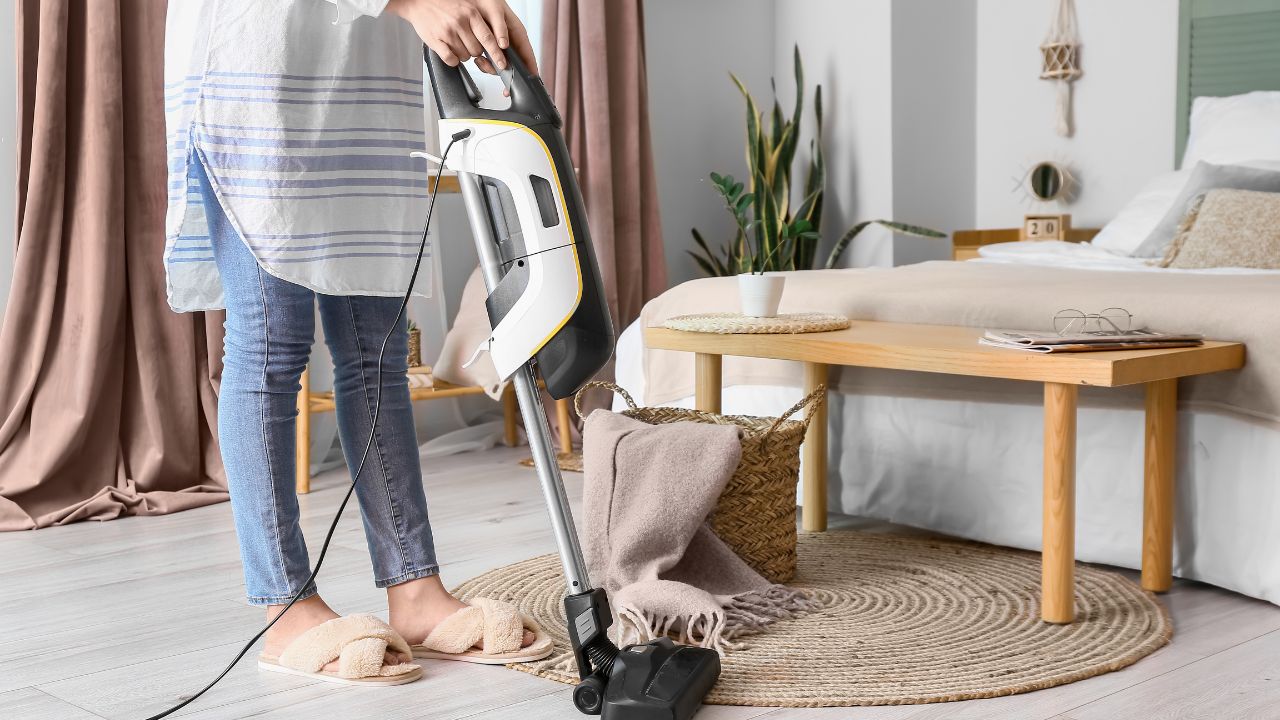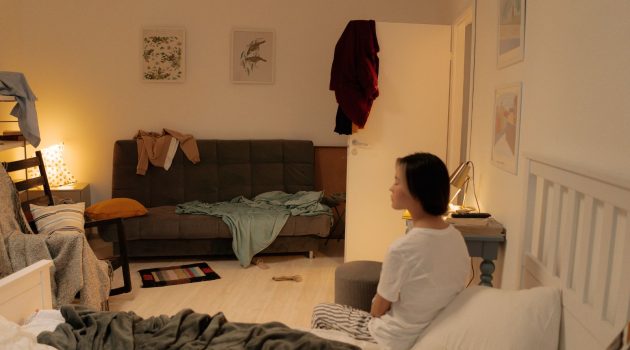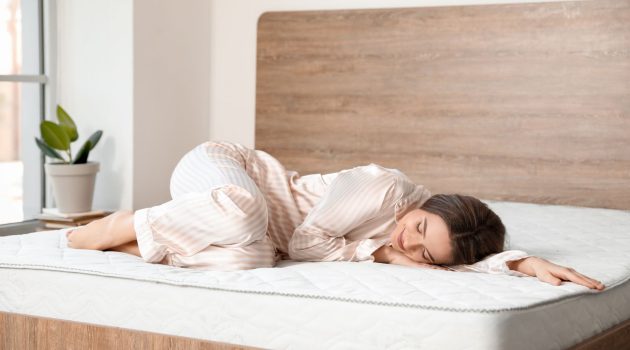A dusty bedroom can be more than just an eyesore; it can also impact your sleep quality and overall health.
But don’t worry – with simple tips and tricks, you can effectively prevent dust accumulation in your bedroom, ensuring a cleaner and healthier environment.
First, let’s understand where dust comes from.
In addition to outdoor sources like pollen and dirt, indoor factors like bedding fibers, pet dander, and dead skin cells contribute to dust accumulation.
By addressing these sources and establishing a regular cleaning routine, you will take significant steps toward maintaining your dust-free sanctuary.
1. Keep the Bedroom Clean
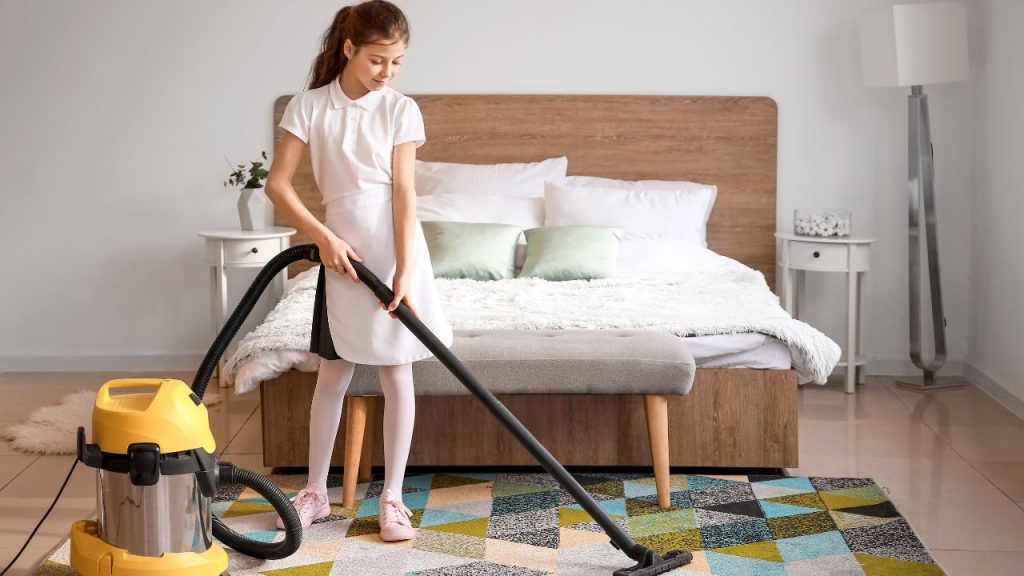
Maintaining a clean bedroom is crucial for preventing dust accumulation.
By following a few simple tips and routines, you can keep your room dust-free and comfortable.
Regular Cleaning
Establishing a consistent cleaning schedule is essential. Dust quickly accumulates, so try to clean your bedroom at least once a week.
This includes sweeping or mopping the floors, wiping surfaces, and washing your bedding. Staying on top of this routine makes it much easier to keep dust at bay.
Vacuuming Floors and Furniture
Vacuuming should be a vital part of your cleaning routine. Aim to vacuum your floors, rugs, and carpets twice weekly to remove dust particles.
Clean upholstered furniture, mattresses, and curtains, as these can also harbor dust.
For added benefits, use a vacuum cleaner with a HEPA filter to trap even smaller, allergy-inducing particles.
Tip: Make sure to clean your vacuum’s filter regularly to maintain its efficiency.
Dusting Surfaces
Dust settles everywhere, especially on shelves, countertops, and nightstands. To avoid a dusty bedroom, use a microfiber or damp cloth to wipe these surfaces down during your weekly cleaning.
Microfiber cloths are particularly effective at trapping dust particles instead of spreading them around.
Remember to dust less accessible areas, like ceiling fan blades, light fixtures, and electronic devices, as they can collect dust too.
It’s a good idea to work from top to bottom, starting with higher surfaces and working your way down so you don’t spread dust onto areas you’ve already cleaned.
Tip: Be cautious with furniture polish, as too much can create a sticky surface that attracts more dust. Applying it sparingly to a cloth rather than spraying it directly onto the surface is better.
READ MORE: Best Farmhouse Bedroom Designs for Your Adorable Home
2. Bed and Bedding Maintenance
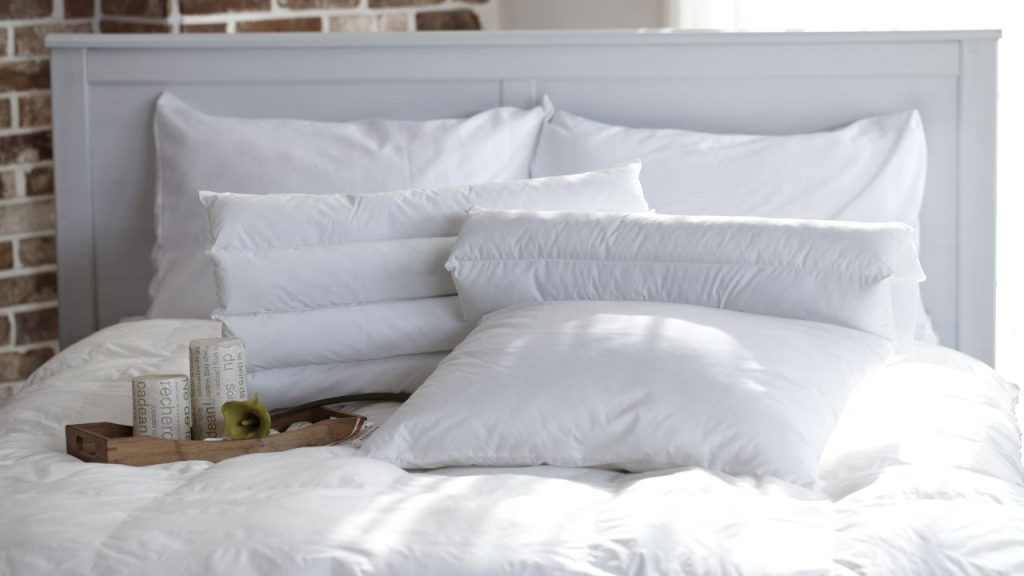
Wash Bedding Materials
To maintain a dust-free bedroom, it’s essential to wash your bedding materials regularly.
For your sheets, pillowcases, and covers, consider washing them once a week in water that is at least 130 degrees Fahrenheit.
This will help reduce allergens and dust mites, ensuring a clean and comfortable sleeping environment.
Use Dust-Proof Covers
Investing in dust-proof covers for your mattress and pillows can make a significant difference in controlling dust in your bedroom.
These covers help block out dust mites and protect from potential water damage. It’s also a good idea to let your bedding air out once every two or three days to reduce dust build-up.
Replace Pillows Regularly
Remember your pillows when trying to prevent dust in your bedroom.
It’s recommended to dry clean them every three to six months, and consider replacing them regularly, especially if they become heavily soiled or lose shape.
A clean, supportive pillow contributes to a healthier sleeping environment and helps keep dust levels to a minimum.
By following these simple steps, you can maintain your bed and bedding for a more enjoyable and dust-free sleeping space.
3. Air Quality Control
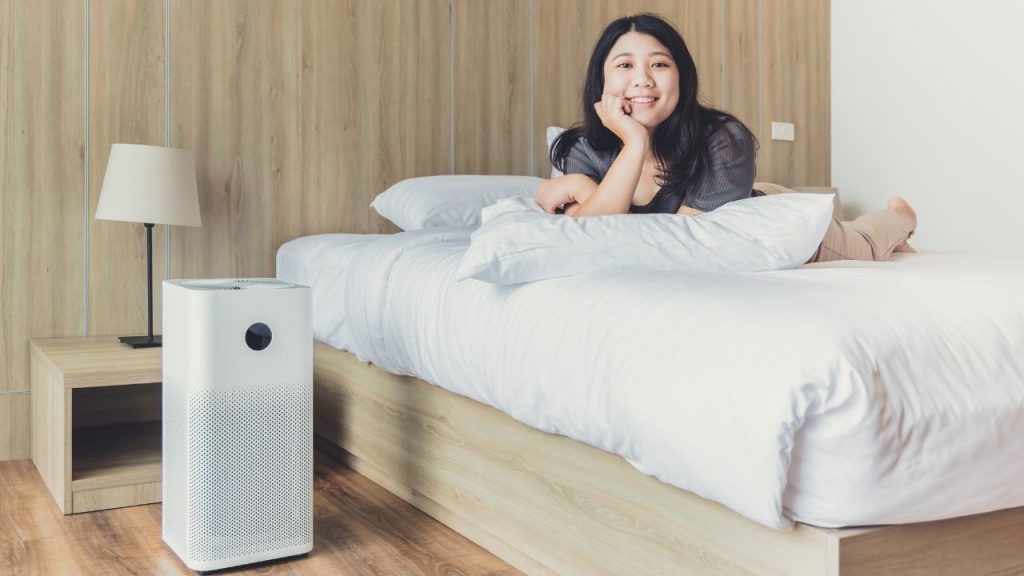
Air Purifiers and Filters
Investing in air purifiers and filters can help you maintain a dust-free bedroom.
Consider using an air purifier with a HEPA filter, as they can effectively capture particles, including dust, allergens, and pollen.
Replace your HVAC filter regularly to ensure optimal filtration in your home.
Here are some simple steps to aid in air quality control:
- Choose an air purifier based on the size of your bedroom to ensure efficient cleaning
- Regularly clean or replace filters according to the manufacturer’s guidelines
- Place the air purifier strategically for easy access and optimal performance
Humidity Management
Proper humidity management plays a crucial role in controlling dust.
High humidity levels can lead to dampness and mold growth, contributing to the dust problem.
Maintain an ideal humidity level by using a dehumidifier or an air conditioning system. Aim for a humidity level between 40% and 50% to minimize dust accumulation.
Follow these tips for managing humidity levels:
- Ventilate your bedroom, especially during activities that generate moisture, like showering
- Use a hygrometer to monitor humidity levels in your bedroom
- Empty, clean, and maintain your dehumidifier regularly to ensure its efficiency
Ventilate Your Bedroom
A well-ventilated bedroom helps improve air quality by reducing indoor pollutants and controlling humidity levels.
Open your windows regularly to allow fresh air in and polluted air out. However, be mindful of pollen and outdoor pollution when ventilating your room.
Here’s a quick guide to effective bedroom ventilation:
- Air out your bedroom for 10-15 minutes each day, morning or evening
- Use exhaust fans to facilitate proper air circulation
- Keep indoor plants to help purify the air naturally
With these strategies in place, you can successfully improve air quality control in your bedroom and minimize dust.
READ MORE: 10 Disadvantages of a Dehumidifier: Essential Drawbacks to Consider
4. Control Bedroom Clutter

Controlling bedroom clutter is one of the most effective ways to prevent dust accumulation.
You can create a clean and dust-free environment by minimizing the number of items in your bedroom and organizing them properly.
Storing Items
Proper storage is key to managing clutter and maintaining a dust-free bedroom. Consider implementing the following storage solutions for various items in your room:
- Books: Store your books in closed bookshelves or cabinets—that way, they won’t collect dust as easily. Alternatively, utilize under-bed storage boxes specifically designed for books.
- Upholstery: Use covered storage containers or vacuum-sealed bags for off-season clothing or extra bedding.
- Knickknacks: Display selective decorative items in glass cabinets or shelves with doors to minimize dust accumulation.
Remember to keep your storage spaces and containers clean—dust them regularly to prevent buildup.
Removing Unnecessary Items
Decluttering your bedroom is crucial in creating a dust-free space. Be selective in what items you keep:
- Reassess your need for certain furniture: for example, two side tables might not be necessary, and removing one can reduce dust build-up.
- Remove excessive pillows, throws, or stuffed animals from your bed—these can collect dust and create a cluttered appearance.
- Dispose of or donate items you no longer need or use—this can include clothing, accessories, or decorative accents.
By controlling bedroom clutter through proper storage and decluttering practices, you will not only create a fresh, dust-free space but also enjoy a more organized and relaxing environment.
5. Reduce Allergens and Irritants
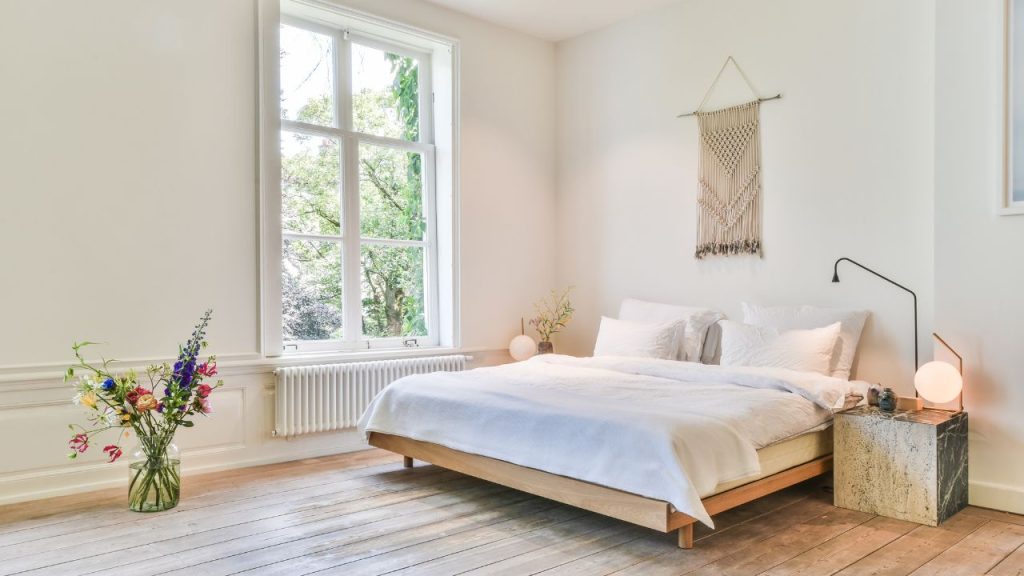
As a friendly guide for reducing allergens and irritants in your bedroom, this article presents tips on how to keep your bedroom as allergy-free as possible.
You can create a more comfortable and healthier living space following these steps.
Pet Dander Management
To help manage pet dander, it’s important to keep your pets groomed and clean. Regular baths and brushing can reduce anger in your pets’ fur.
In addition, consider designating a pet-free zone in your sleeping area to minimize the amount of pet dander settling in your bedroom.
Use washable pet bedding and clean it at least once a week in hot water to reduce allergens further.
Seal Windows and Door Gaps
Another way to reduce irritants in your bedroom is to seal gaps around windows and doors. This will help prevent outdoor allergens, such as pollen, from entering your room.
Make use of weather-stripping or caulk to seal these gaps. Additionally, ensure your windows are closed during high pollen times, and use air conditioning or fans to regulate temperature instead.
Minimize Carpet Use
Carpets can trap allergens, making it challenging to keep your bedroom allergen-free. Consider replacing wall-to-wall carpeting with hardwood or laminate flooring.
Area rugs may also be a good option, as they can be easily removed and cleaned.
If replacing carpet is not feasible, regular vacuuming, at least twice a week, can help minimize allergens. Use a vacuum cleaner with a HEPA filter to capture small particles effectively.
Remember, maintaining a clean bedroom environment and reducing allergens will help improve indoor air quality and keep allergies at bay.
6. Implementing House Rules
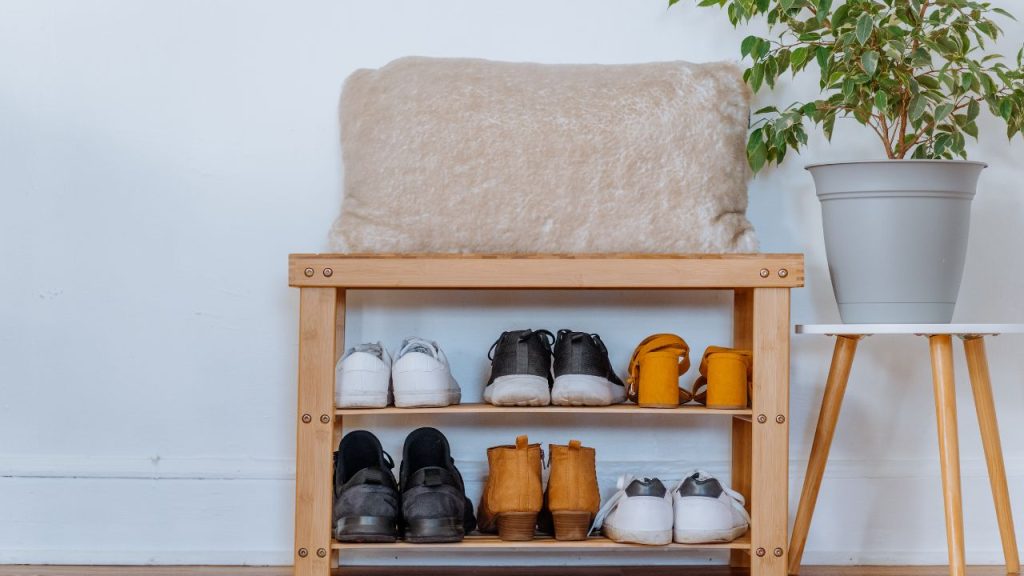
No Shoes in the Bedroom
To maintain a dust-free bedroom, it’s essential to implement a “no shoes in the bedroom” policy.
Shoes can track in dirt, dust, and other allergens from outside, contributing to dust build-up in your room.
You can significantly reduce dust entering your bedroom by leaving your shoes at the door or in a designated area.
Consider placing a friendly reminder near the bedroom door to remind you and your guests to remove their shoes before entering.
In addition, using a doormat at the entrance of your home can help trap dirt and debris from shoes, preventing them from spreading throughout your space.
Keep Pets Out
Pets can be another significant source of dust and allergens in the bedroom. Their hair, dander, and the dirt they track in from outside can contribute to excess dust in your room.
To prevent this, establish a rule to keep pets out of your bedroom as much as possible.
By giving your pets their own dedicated space in your home, you can still enjoy their company while maintaining a cleaner bedroom environment.
Remember that consistency is key when implementing these house rules.
By sticking to these guidelines and being diligent about keeping shoes and pets out of your bedroom, you can create a more pleasant, dust-free sanctuary for yourself.
Frequently Asked Questions
How can I reduce dust accumulation in the bedroom?
To reduce dust accumulation in your bedroom, clean regularly and deeply, control humidity, and establish a regular cleaning routine. Use doormats to reduce dirt brought in from outside and reduce clutter to minimize dust build-up. Don’t forget to change your HVAC filter regularly!
What are some effective solutions to minimize dust in my sleeping area?
Effective solutions for minimizing dust in your sleeping area include using air purifiers, dust-proof mattress covers, and washing your bedding regularly. Let your bedding air out once every two or three days to help keep it dust-free.
How can using an air purifier help with bedroom dust?
Air purifiers can help remove dust particles from the air in your bedroom, promoting a cleaner environment. They work by filtering and trapping dust, allergens, and other airborne particles, reducing the amount of dust that settles on surfaces.
What natural methods can I use to eliminate dust in my home?
Natural methods to eliminate dust in your home include opening windows to let in fresh air, using non-toxic cleaning products, vacuuming with a HEPA filter, and using microfiber or electrostatic dusters. Make sure you maintain healthy humidity levels as well, as this can prevent dust from becoming airborne.
Are dust mites a common cause of a dusty bedroom?
Dust mites are indeed a common cause of a dusty bedroom. They thrive in unwashed sheets and beds, feeding on dead skin cells. Regularly washing your bedding and using dust-proof mattress covers can help minimize the presence of dust mites.
How can I avoid dust on surfaces in my room?
To avoid dust on surfaces in your room, dust and clean them often using a microfiber or electrostatic duster. Maintain proper humidity levels to minimize airborne dust, and use air purifiers to filter out dust particles from the air. Regular cleaning and minimizing clutter can also help reduce dust buildup on surfaces.
